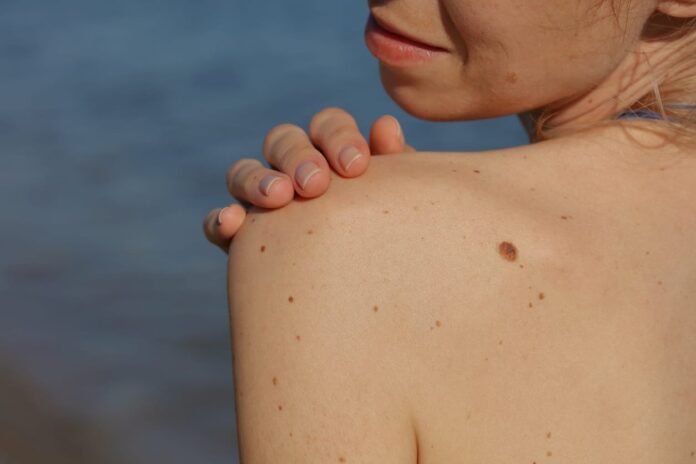Skin moles, also known as nevi, are common pigmented spots that can appear anywhere on the body. They vary in size, shape, and color and are typically harmless. Some people are born with moles, while others develop them over time due to sun exposure or genetic predisposition. While most moles are benign, changes in their appearance can sometimes signal a medical concern that requires further evaluation.
If you’ve been noticing unusual changes in a mole or simply want it removed for cosmetic reasons, understanding when mole removal is necessary becomes crucial. Mole Removal In Dubai is a popular aesthetic and medical procedure due to the city’s focus on skincare and dermatological advancements.
When Is It Necessary to Remove a Mole?
Moles don’t always require removal. However, certain changes or symptoms may indicate the need for further assessment or removal. Below are key reasons for considering mole removal.
Atypical Appearance or Changes
One of the biggest indicators that a mole should be examined or removed is when it begins to change in size, shape, color, or texture. These changes can be a sign of skin abnormalities, including melanoma. The ABCDE rule is commonly used by dermatologists to assess potential risks.
| ABCDE Rule for Mole Evaluation | What to Watch For |
|---|---|
| A – Asymmetry | One half does not match the other half in shape |
| B – Border | Edges appear irregular, blurred, or notched |
| C – Color | Uneven color with shades of brown, black, red, or white |
| D – Diameter | Greater than 6mm (about the size of a pencil eraser) |
| E – Evolving | Any change in size, shape, or symptoms like itching or bleeding |
If a mole shows one or more of these signs, professional evaluation is advised.
Cosmetic Reasons
In many cases, individuals opt for mole removal purely for cosmetic enhancement. Moles on the face, neck, or visible parts of the body can affect one’s self-esteem or overall appearance. Advanced techniques ensure that the procedure is safe and leaves minimal scarring, making mole removal a trusted choice for aesthetic improvements.
Types of Moles That May Require Removal
Moles can be categorized into various types, and their nature determines whether removal is necessary.
| Mole Type | Description and Concern Level |
|---|---|
| Common Moles | Usually harmless, round, and small |
| Dysplastic Nevi | Irregular in shape/color; higher risk for skin cancer |
| Congenital Moles | Present at birth; larger ones may carry a risk |
| Acquired Moles | Develop over time; typically benign |
| Blue or Red Moles | Usually benign but should be checked if changes occur |
Removal Techniques Based on Mole Type
Surgical Excision
This is typically used for larger or potentially cancerous moles. It involves cutting out the mole and stitching the wound.
Shave Removal
Best suited for small, raised, or benign moles. The mole is shaved off using a surgical blade without needing stitches.
Laser Mole Removal
A modern technique ideal for small, non-cancerous moles. Laser energy breaks down mole pigment without damaging surrounding tissue.
Cryotherapy
This method uses liquid nitrogen to freeze and destroy the mole tissue. It’s often used for superficial moles.
Mole Removal and Healing Process
The healing process depends on the type of removal technique used. Most minor procedures heal within 1 to 2 weeks. Keeping the wound clean, avoiding sun exposure, and applying topical ointments as prescribed supports smooth recovery. For cosmetic concerns, mole removal methods now prioritize scar minimization and skin texture preservation.
Preventive Measures for Skin Health
Use Sunscreen Regularly
Ultraviolet (UV) rays can trigger mole development and increase the risk of skin cancer. Always apply a broad-spectrum sunscreen with SPF 30 or higher.
Wear Protective Clothing
Cover exposed areas when spending long hours in the sun. Hats, sunglasses, and long sleeves offer added protection.
Avoid Tanning Beds
Artificial UV radiation from tanning beds significantly raises skin cancer risks and accelerates mole changes.
Who Should Avoid Mole Removal?
While mole removal is generally safe, some individuals may need to delay or reconsider treatment. This includes:
- Pregnant women (in some cases)
- Individuals with certain skin infections
- People on blood-thinning medications
- Those with uncontrolled diabetes or wound-healing conditions
Consultation with a specialist is essential to ensure timing and technique suitability.
FAQs
What are the signs that a mole could be cancerous?
Signs include changes in color, asymmetry, irregular borders, increasing size, and evolving texture. Bleeding, itching, or sudden appearance are also red flags.
Can moles grow back after removal?
Yes, some moles may return, especially if not entirely removed. Surgical excision generally lowers the risk of regrowth compared to shaving or laser.
Is mole removal painful?
Most procedures involve local anesthesia, making them virtually painless. Minor discomfort may occur post-treatment but is usually manageable.
How long does it take to recover after mole removal?
Recovery varies by method. Shave and laser removal typically heal in 7–14 days, while surgical excision may take a few weeks.
Can mole removal prevent skin cancer?
Removing a suspicious mole early can prevent potential cancer progression. However, regular skin checks remain vital for overall skin health.
Conclusion
Moles are often harmless, but knowing when a mole should be removed is crucial for both health and aesthetic reasons. Whether you’re monitoring changes or addressing personal appearance goals, understanding mole types, warning signs, and removal options empowers you to make informed decisions. Thanks to modern dermatological advancements, Mole Removal offers safe, effective, and minimally invasive solutions tailored to each individual.
































